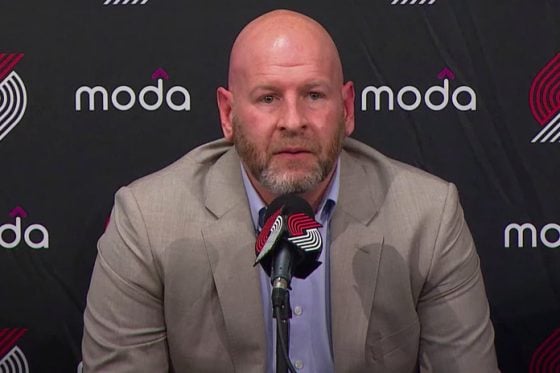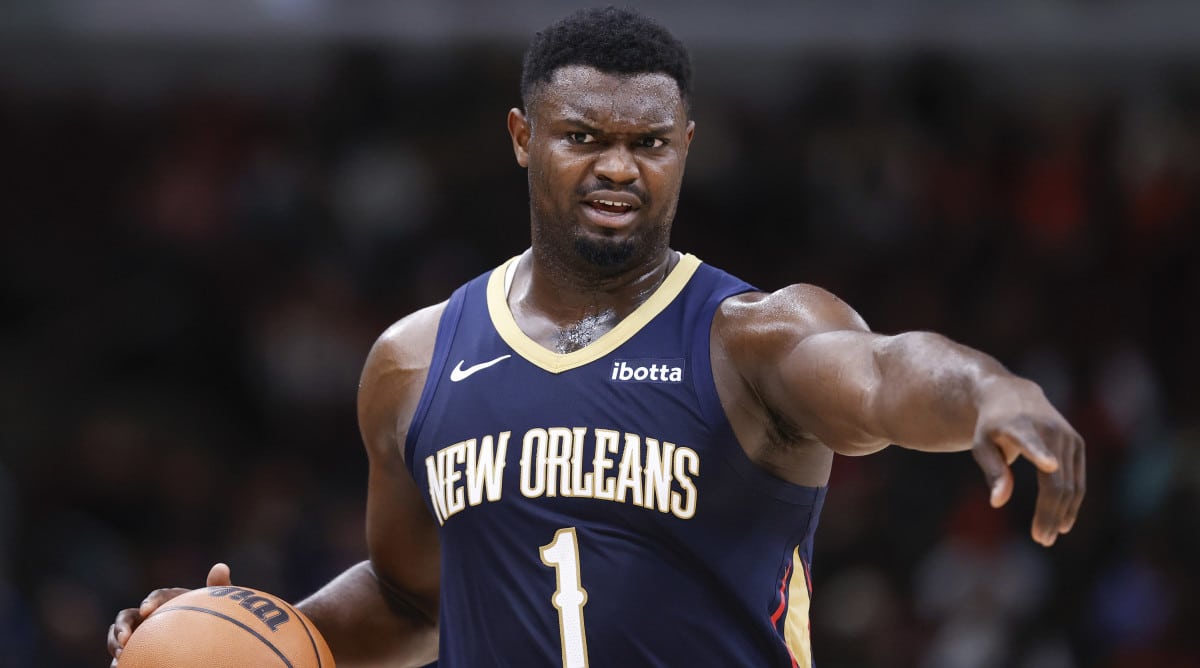It’s no secret that the Boston Celtics’ defense has been stellar this season. Ever since they started winning, that’s all the media has talked about. Players like Robert Williams III and Marcus Smart get praise on a daily basis for how they have helped transform Boston’s defense, and rightfully so. Those guys have been amazing. But they aren’t the only players putting in the work.
Naturally, all five of the Celtics’ regular starters rank in the top-16 for defensive win shares (in short, how much a player contributes to their team’s success) according to Basketball Reference. Jaylen Brown is 16th, Smart is 14th, Al Horford is 13th, and Williams is eighth. Jayson Tatum? First.
Throughout his time in Boston, Tatum has been tasked with carrying the C’s on offense. But during a season where he is shooting a career-low from the field and from deep, he’s taken on a larger responsibility on the opposite end of the floor.
Ime Udoka’s defensive scheme relies a lot on help defense. There’s a lot of switching, a lot of rotating, and above all, there’s a lot of helping. Williams ends up taking on the brunt of this work, as instead of guarding opposing big men, he spends his time roving and waiting to help on the drive and get those insane blocks he’s become known for.
But the rest of the Celtics have to move a lot, too. That’s what makes their defense so special. And because of that, Tatum has had to adapt in a big way.
Tatum is such a long, versatile defender that the Celtics can afford to switch everything with (when necessary). He can hold his own against small, quick guards just as well as he can against opposing big men.
Let’s look at Tatum’s defense against guards. While it may seem like Tatum had little impact on this play, look at how he switches onto Tyrese Maxey when Smart directs him to. He began the play guarding Danny Green, but when the screen came, was able to switch over and prevent Maxey from getting to the rim. Instead, the Sixers have to settle for a Matisse Thybulle jumper.
Again, it’s a minute, seemingly useless detail, but it’s that sort of versatility that makes Boston’s defense so effective. If Smart was forced to fight through the screens, he would have been a step slow.
Just look at what happens to the Chicago Bulls here. Maxey received a double screen (just as he did against the C’s), but neither Malcolm Hill nor Nikola Vucevic is quick enough to switch onto him. Instead, Ayo Dosunmu has to fight through two screens to contest Maxey at the rim and ends up fouling him in the process for an and-1.
Credit Maxey for making a tough shot here, but the point is he was able to get into the paint. Since Tatum was able to switch onto him on the perimeter, he negated that completely. That’s what Boston’s defense is all about, and it’s why Tatum fits right in.
Tatum’s able to do more than just briefly stop guards from getting to the hoop, too. When he’s forced to cover guards for extended periods of time, he holds his own just as well:
When it comes to shifty guards, there aren’t many better than Trae Young. He’s known for throwing defenders off balance and either getting to the hoop or pulling up from three. Tatum ensured that neither of those things happened and instead, forced a turnover on the play.
The 23-year-old isn’t just great at helping on the drive, either. Remember that tidbit about Williams helping from the corner? Well, someone needs to be ready to cover for him, too. The best offenses in the league are ready to kick it out to the open man when Williams runs to the paint to help on the drive. In turn, Boston has to rotate and send someone to the corner to cover.
This seemingly simple task requires quickness, agility, and great awareness for the play before it develops. Here, Tatum is able to react to the pass from Mason Plumlee and get over to contest Terry Rozier’s shot in time.
A block probably should have been credited to Tatum on this play, but regardless, Tatum stopped an open three. Not only was he able to sprint over and get to the corner in time, but he recovered from his own overextension, too. He bit on a pump fake, but due to his length and athleticism, was able to get right back in Rozier’s face. (Also, shoutout to Horford for getting out of the paint to prevent a pass to PJ Washington.)
While Tatum’s defense on all of these plays (particularly against Young) has been great, his success is, in large part, due to the nature of Udoka’s defense system. As mentioned, the scheme relies heavily on switching and helping. This is why players like Dennis Schroder and Enes Freedom struggled to thrive – they weren’t able to switch onto out-of-position opponents without creating matchup problems.
A starting five of Smart, Brown, Tatum, Horford, and Williams are all able to do that. Both Derrick White and Grant Williams can also guard every position (or at least get by), and Daniel Theis is versatile enough to help out in that way, too.
In most cases, no one player ends up guarding the same opponent for more than a few seconds (unless the opponent’s offense goes stale). If the ball is moving and screens are being set, Boston is switching.
Tatum is more than capable of switching onto guards, wings, forwards, and centers all the same. Sometimes the opponent makes a tough shot, but his defense is sound nonetheless. Here are some prime examples of Tatum guarding the ball and making an impact.
GUARD: Matched up against Dejounte Murray. Timed the block perfectly.
WING: Switched onto Bogdan Bogdanovic. Great stance, got the block.
FORWARD: Ends up guarding Harrison Barnes out of a scramble. Perfect contest.
CENTER: Switched onto Isaiah Stewart. Phenomenal defense, better shot.
Not all of these were switches, but Tatum simply ended up guarding other positions due to defensive needs. Regardless, his ability to defend a wide variety of players and positions allows the Celtics to switch and play freely.
And just as much as they are constantly switching, the Celtics are always ready to provide help. Boston’s ability to recognize plays as they go and help accordingly has been huge, and Tatum has done a great job at that. Just look at this play here. Boston needed a stop, and while the Williams block will get all the love, Tatum forced the action.
Nikola Jokic has White in a post-up. He could have dug in and gone to work. But instead, Tatum runs over, double-teams Jokic, and forces him to make a play. While Jokic makes the perfect pass and Boston’s floating defense smothers Zeke Nnaji under the rim. It was a beautifully executed defensive possession where every single person on the floor played their role perfectly.
That’s just it. The key to great defense is making sure that every player is on the same page. Williams and Smart may be leading the charge, but Tatum’s ability to play his role (and play it at an elite level) should not go unnoticed.
Tatum has always been capable of being an elite defender. As much as Brown has been credited with being the perimeter lockdown of the duo, Tatum has improved on that side of the ball dating back to last season, too. And with this new defensive scheme, Tatum is simply playing his role and the returns are glowing.





